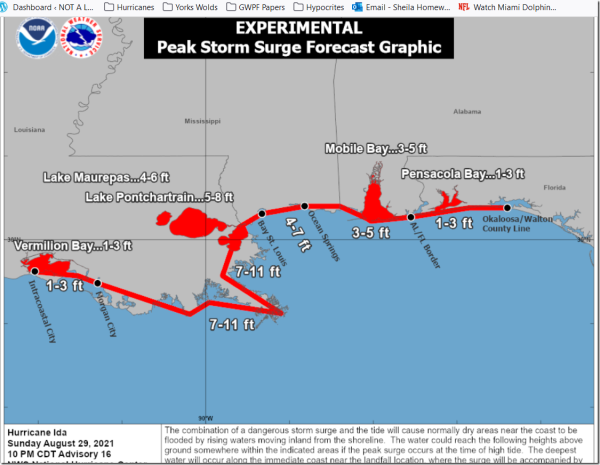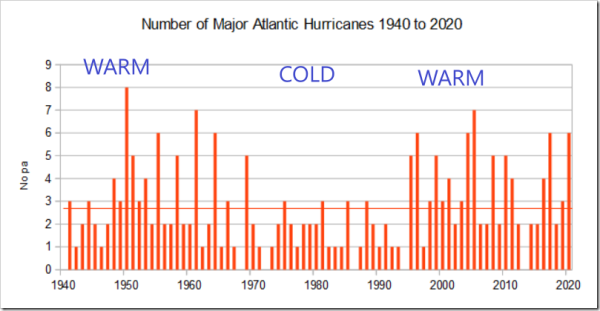https://notalotofpeopleknowthat.wordpress.com/2021/08/30/hurricane-ida/
By Paul Homewood

https://www.nhc.noaa.gov/refresh/graphics_at4+shtml/031947.shtml?cone#contents
Hurricane Ida hit the Louisiana coast yesterday afternoon as a powerful Category 4 storm. So far there has been only one reported death, and damage has been pretty much standard for a major hurricane. Fortunately the more apocalyptic warmings never materialised.
NHC data suggest a maximum storm surge of between 7 and 11 feet, which again is not unusual.
https://www.nhc.noaa.gov/refresh/graphics_at4+shtml/031947.shtml?peakSurge#contents
Although more news may emerge, apart from some localised coastal flooding, the damage is largely limited to power lines and trees down, flash floods and the like, although one hospital lost its roof.
https://www.bbc.co.uk/news/world-us-canada-58378788
As usual, the BBC attempt to link the hurricane to climate change:
https://www.bbc.co.uk/news/world-us-canada-58378788
As they well know, because they have been forced to retract such claims before, the data shows that hurricanes are not becoming more intense, a fact that the IPCC themselves acknowledge.
300 hurricanes made US landfall between 1851 and last year, including 92 major ones, that is Cat 3 and over. The busiest decade for major hurricanes was the 1940s, while in contrast the last decade was one of the quietest. Ida is the first hurricane to hit the US so far this year.
https://www.aoml.noaa.gov/hrd/hurdat/All_U.S._Hurricanes.html
The Independent has also deviously claimed that Ida was the fifth-strongest hurricane to ever hit the mainland United States.
In reality it is actually tied with six other hurricanes, meaning it is only amongst the top 10. Many hurricanes prior to the satellite era of course may not have had their peak wind speeds actually recorded.
https://www.aoml.noaa.gov/hrd/hurdat/All_U.S._Hurricanes.html
Interestingly, Ida hit the same stretch of coast and with the same wind speeds as the Last Island hurricane in 1856. That hurricane left at least 200 dead, wiping out just about every structure on Last Island. It is believed that the Last Island hurricane may have reached Cat 5 status, but its maximum windspeeds were unrecorded, a common problem in those days.
By Paul Homewood
Yes, the number of major Atlantic hurricanes has increased in the last four decades, but this is because of the AMO, not climate change, as NOAA explain:
https://www.aoml.noaa.gov/phod/faq/amo_faq.php
The AMO moved into its warm phase around 1995, following thirty years in its cold phase. Prior to that it was in its warm cycle between the 1930s and 50s:
And when we check out the data for major Atlantic hurricanes, we find that they were just as frequent as now during that earlier warm phase:
https://www.aoml.noaa.gov/hrd-faq/#1569507388495-a5aa91bb-254c
There has been no trend in major hurricanes worldwide since 1990, confirming the cyclical effect of the AMO:
http://climatlas.com/tropical/
This is why the IPCC say there is “low confidence” in long term (multi decadal to centennial) trends in tropical cyclones.













